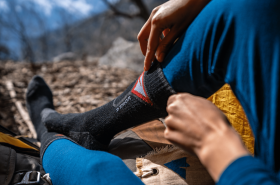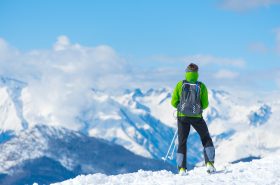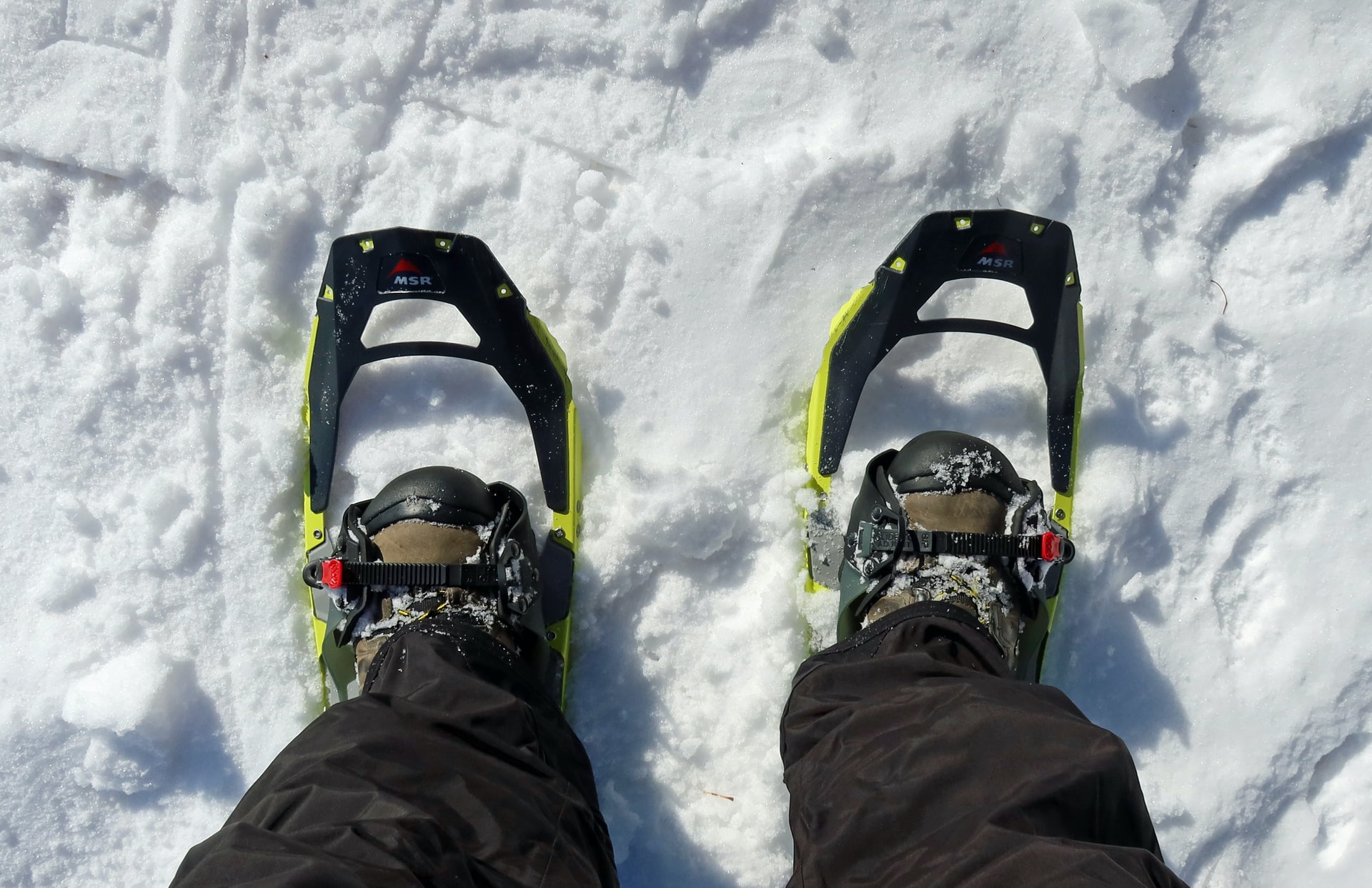
Wondering what shoes to wear in the snow that is perfect for the cold weather? Then keep reading!
I always wondered what I would do if we did not have access to the internet connection. I mean, I google most of my day-to-day tasks even without knowing. And it is a headache when you don’t find what you are looking for in your internet research. Recently I came up with one such topic. I was planning my winter holidays and wanted to try winter trekking.
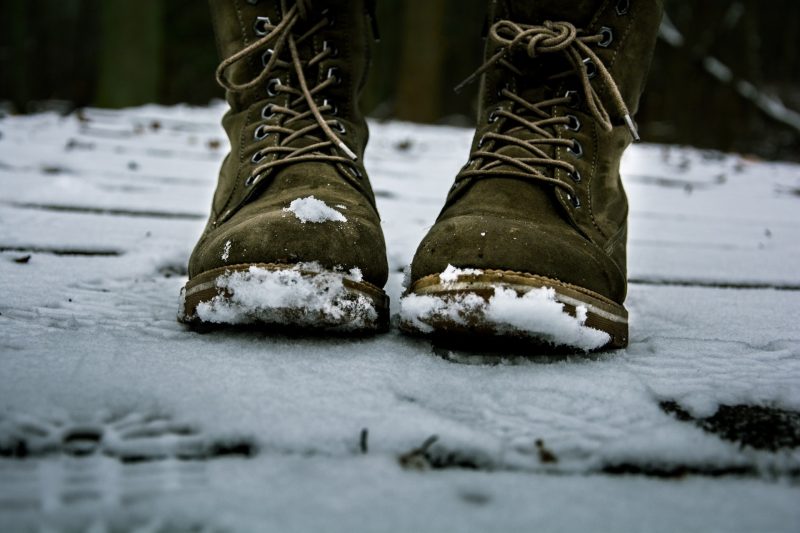
Shoes for snow
If you are not familiar with winter trekking, it basically involves trekking but in winter. And mostly, it involves a lot of snow. When it is the first time, you obviously want to be prepared, and like any other Gen Z user, my first research stage involved asking Google.
I searched for what to pack for snow and not to my surprise, it gave a lot of educational content. But in almost all the content, the focus was on the layers you need to have and very few suggestions on what shoes to wear in the snow.
There were recommendations of course, but most of them failed to answer many of my curious questions. So, that is when I decided to do a bit of research myself and bring to you this mini-guide of what shoes to wear in the snow. Special thanks to Ishani Jamwal(Mountaineer), Geetica Srivastava(Entrepreneur), Abishai Dmello(Mountaineer), Shekhar Singh(Founder of Alpine Husky), and Huzefa Siamwala(Founder of Blue Bolt Adventure Gear) for sharing your experienced inputs on the topics.
So without further ado, let’s dive into the basics.
What shoes to wear in the snow
Before you decide on what shoe you need for snow, there are two questions that you need to have a clear picture of.
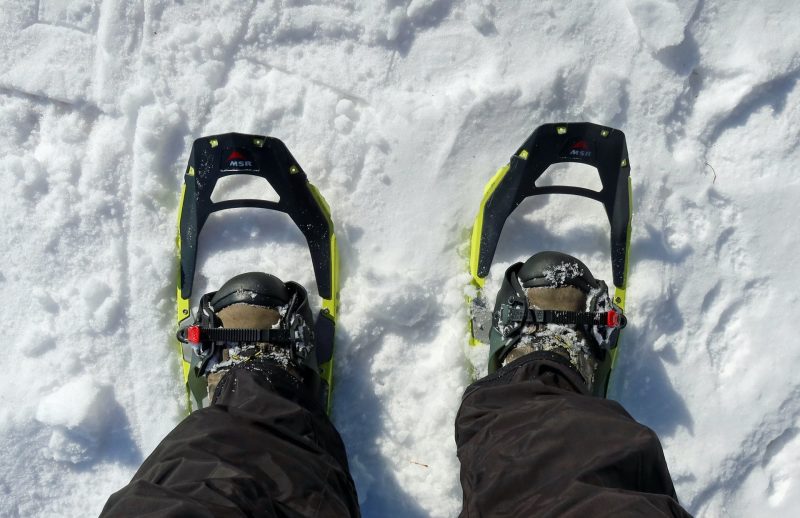
What shoes to wear in the snow
The first one would be the intent and the second one would be the type of snow you would be experiencing. It is impossible to conclude the second question without getting your intent clear.
By intent, what I mean is, you should know for what reason you are purchasing the shoe. Is it going to be a skiing shoe? Or a trekking shoe you can wear on snow? Or is it simply a snow boot that would help you walk on the snow when the roads are covered with it, nothing too adventurous? Once you have your intent clear, it would be easy to answer the next question.
Snow can be soft or dry/hard. Soft snow is powdery and might need a bit of practice to manage, dry/hard snow can be manageable. As Huzefa recollects “Walking in soft snow is hard work and you will sink with every step. Takes turns to lead and follow the footsteps made by others. Using 2 hiking poles with a large snow basket will be most helpful in balance.”
So depending on the intent and type of snow, you can choose.
What you need to look for in a good shoe for snow can be divided into 3
- Fit
- Insulation
- Material
Fit denotes the grip and style of the shoes. Depending on the occasion you can choose your shoes to be ankle length, knee-high boots, or the ones with good traction. Your shoes need to be a snug fit and have a good grip as you don’t want them to fall off when walking in the snow.
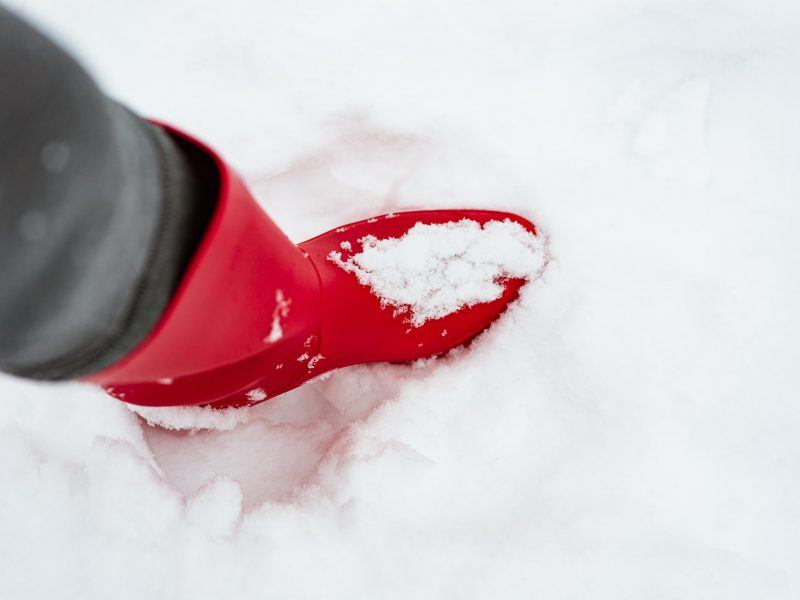
Snow boots
Insulations refer to the warmth the shoes provide. Almost all shoes for snow are layered with fleece or other insulating materials that can keep your feet warm and comfortable.
All snow shoes need to have a water-resistant material as the outer layer. The sole or base of the shoes can either be rubber, gum, or a synthetic lightweight material like TPU. Here are some of the common materials used for shoes for snow.
Type of Shoe Material #1 – Nylon
Nylon is a very common material used for the outer crust of shoes for snow. It can keep the shoe water-resistant and thereby dry.
Type of Shoe Material #2 – Rubber
When it comes to the sole of the shoes, rubber is a favorite. Rubber makes sure that the snow does not get stuck to the sole and the ease of removing the snow is also high.
Type of Shoe Material #3 – Thermoplastic Urethane
Thermoplastic Urethane, also known as TPU is another synthetic material that can be used for the sole. It is more lightweight compared to rubber.
Type of Shoe Material #4 – Suede
Waterproof suede acts as a great insulator for shoes in the snow. Most knee-high snow boots are made of suede.
One parameter to be considered while choosing suede shoes is to opt for the ones that are waterproof rather than the regular ones. As Ishani says “The best material for winter shoes can be any waterproof material”.
How to wear shoes in the snow
Shoes in the snow have multiple roles as compared to ordinary winter shoes. The need to provide warmth, good grip in snow, and great traction so one does not slip and fall in ice.
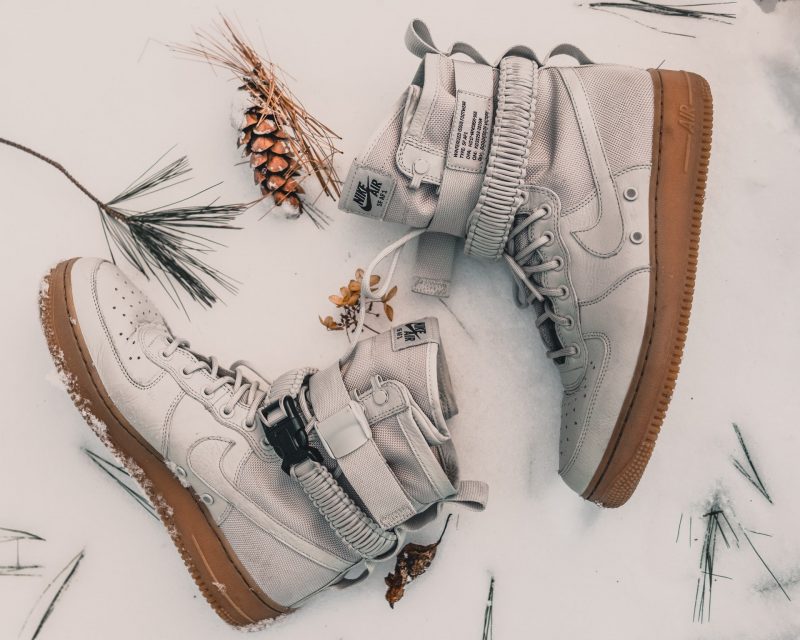
Ankle Boots
To start with the basics, it is always advised to use woolen socks with shoes in snow or snow boots.
Avoid cotton socks as they retain moisture longer than wool which can keep your feet cold. The best option would be regular length or ankle length merino wool socks. They not just keep your feet warm but are also quick-dry, temperature regulating, anti-bacterial, and anti-odor.
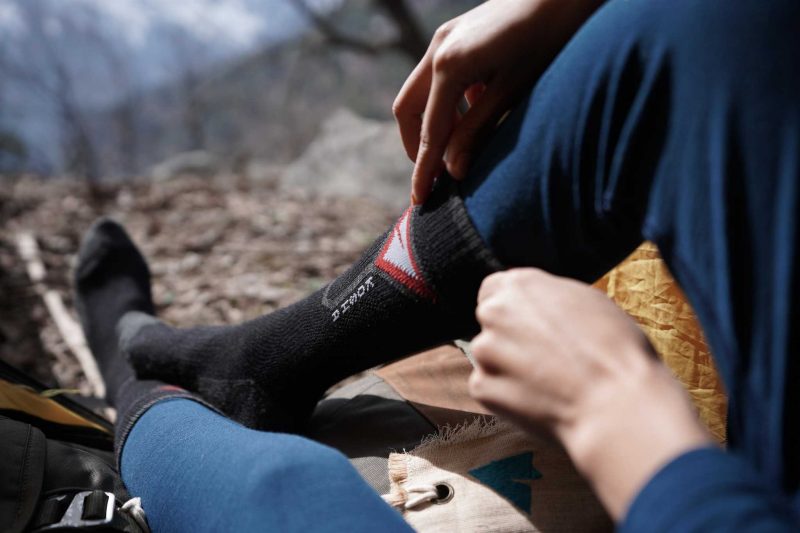
Warm Socks
You can check and shop Kosha’s merino wool socks for men here and women here.
One of the troubles with walking in snow is that it is very easy for the snow to enter inside your oats or bottom or worse enter your shoes.
So, it is always recommended to wear gators while in snow. Most of the good snow boots or shoes for winter will have tiny hooks in front of the shoes. These are to connect the gators with your shoes so that the snow does not enter inside. Some pants like Kosha’s hardshell ski pants already come with gators; if not, you will have to purchase them separately.
Another amazing accessory that you need to know which can help you with wearing shoes for snow is snowshoes. They are platforms that look kind of similar to a skating board which can have a binding for your regular shoes for snow. They are long and can help you navigate easier in the snow.
Most commonly asked questions about snow shoes or winter boots
Here are some commonly asked questions about shoes for snow.
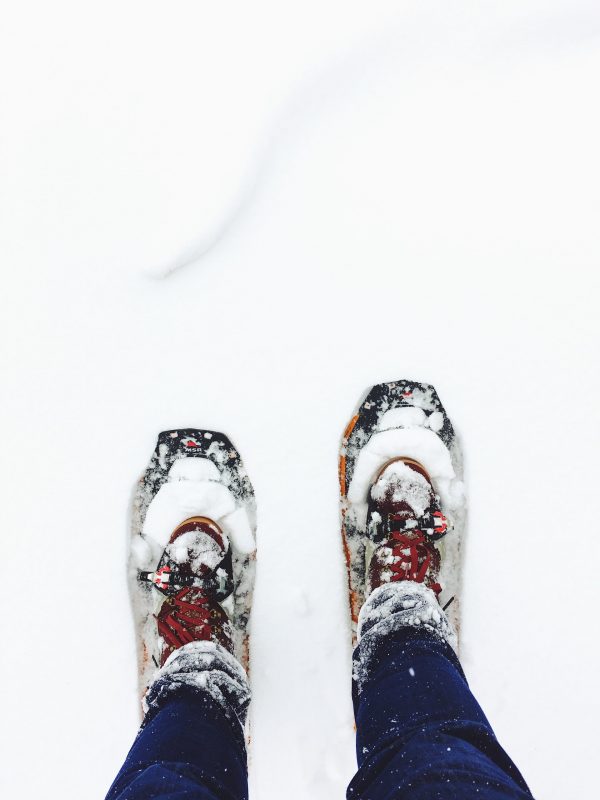
Winter shoes
What is it like to walk in the snow? Will you fall often?
Many people have different experiences on this.
According to Ishani, “Walking in the snow is not that hard if you learn the basic technique of ascending and descending on snow. You can put pressure on the front part of your feet, use your toes while ascending and use put pressure on your heels while descending
You might fall in the beginning but once you get the hang of it, you’ll find it comfortable to walk.”
According to Shekhar, “Fun, slippery and if you’ll walk like a duck then yes you’ll fall often” and for Abishai, it goes like this “not fun, life flashes just as you are about to fall”. Well, one thing we can all agree on is the falling part.
So, be extra careful to choose the shoes that provide the best traction.
What is the best material for winter shoes?
According to Geethika, “Material is mostly rubber and thick soles. Gum sole is also fine. The main objective is that it should not skid or slip and also there should be no water leak.” Shekhar and Ishani also agree on the rubber part.
“Upper – waterproof breathable fabric which helps keep your feet dry and warm in snow and wet conditions. The sole – rubber material that has 3-5mm lugs for traction and stability in snow.”, elaborates Huzefa.
What type of shoes to wear in snow?
According to Ishani, “You can wear ankle-length shoes if not proper boots
I prefer buying from decathlon as it is affordable and lightweight as well
Although they aren’t fully waterproof you can buy full waterproof shoes as well
The soul, grip of Quechua shoes is nice, otherwise one can go for Columbia shoes as well, and then there are other brands like Salomon, la Sportiva, Scarpa”. Shekhar also supports la Sportiva shoes.
Geetica suggests normal snow boots or gumshoe boots for snow whereas according to Abishai “Honestly I don’t know of any shoe that would be able to provide grip as good as a traction device microspikes, basically a Crampon but less aggressive teeth”. Huzefa also believes that EVA shoes have great potential.
What shoes to wear in winter if there are no boots?
The most common answer to this question was waterproof hiking shoes.
What are the best shoes for hiking or running in the snow?
“For hiking, waterproof-breathable boots and EVA boots are both excellent choices.
For running, choose low ankle lightweight waterproof shoes for better ankle mobility.”, Huzefa states.
According to Ishani, “For a good snow area where you’d want to trek or go for an expedition, I would recommend proper kofloch snow boots. For running, again you can go for any waterproof material ankle-length shoes”,
So in short, something lightweight, breathable and reliable.
Now that you have gone through this blog, do you think you understand a bit more about what shoes to wear in winter than before? Are there any questions that you want us to answer? Let us know in the comments!
